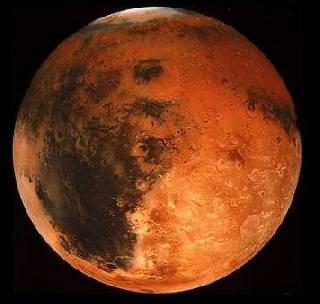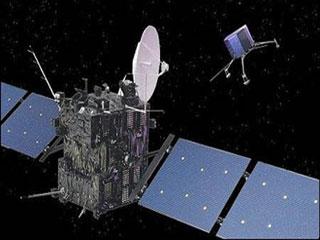
SAN ANTONIO, TEXAS (BNS): Mars may have been robbed of its mass by an infant Jupiter in the early Universe, according to a new study.
Scientists since long have wondered why isn’t Mars more like its next-door neighbours – Earth and Venus. The Red planet is about half the size and one-tenth of the mass of Earth.
The study, involving simulations of the early Solar System conducted by a team of planetary scientists led by Dr. Kevin Walsh, a research scientist at Southwest Research Institute® (SwRI®), has revealed how Jupiter could have been responsible for Mar's reduced mass.
Performing simulations of the early Solar System, the scientists demonstrated that how an infant Jupiter may have migrated to within 1.5 astronomical units (AU, the distance from the Sun to Earth) of the Sun, stripping a lot of material from the region and essentially starving Mars of formation materials.
“If Jupiter had moved inwards from its birthplace down to 1.5 AU from the Sun, and then turned around when Saturn formed as other models suggest, eventually migrating outwards towards its current location, it would have truncated the distribution of solids in the inner solar system at about 1 AU and explained the small mass of Mars,” according to Walsh.
“The problem was whether the inward and outward migration of Jupiter through the 2 to 4 AU region could be compatible with the existence of the asteroid belt today, in this same region,” the scientist said.
The team conducted a large number of simulations. “The result was fantastic,” said Walsh.
“Our simulations not only showed that the migration of Jupiter was consistent with the existence of the asteroid belt, but also explained properties of the belt never understood before.”
The asteroid belt is populated with two very different types of rubble, very dry bodies as well as water-rich orbs similar to comets.
Walsh and collaborators showed that the passage of Jupiter depleted and then re-populated the asteroid belt region with inner-belt bodies originating between 1 and 3 AU as well as outer-belt bodies originating between and beyond the giant planets, producing the significant compositional differences existing today across the belt.
The researchers have published their report in the journal Nature.
 Previous Article
Previous Article Next Article
Next Article













The Indian Air Force, in its flight trials evaluation report submitted before the Defence Ministry l..
view articleAn insight into the Medium Multi-Role Combat Aircraft competition...
view articleSky enthusiasts can now spot the International Space Station (ISS) commanded by Indian-American astr..
view article